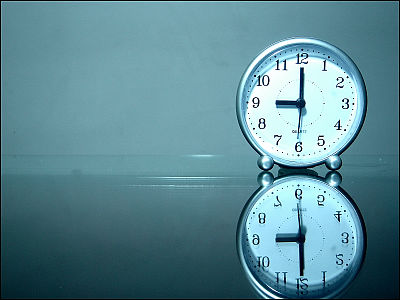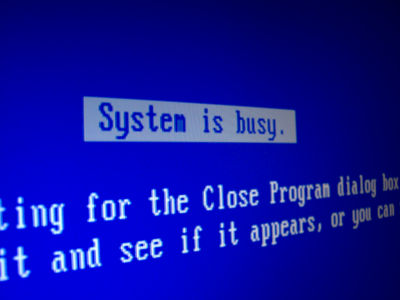What is the 'Eisenhower Matrix' that manages task priorities by dividing them into four parts?

There are several ways to handle the many tasks that occur in your work and daily life. Among them, the ' Eisenhower Matrix ' is a method of dividing tasks into four categories: 'important and urgent', 'important but not urgent', 'not important but urgent', and 'important and neither urgent'.
The Eisenhower Matrix: Introduction & 3-Minute Video Tutorial
The name 'Eisenhower Matrix' was described by Dwight D. Eisenhower , the 34th President of the United States, 'There are two types of problems I have,' urgent 'and' important. ' It comes from the speech that 'important' is never 'urgent'. This speech was at the second General Assembly of the World Council of Churches held at Northwestern University in 1954, and the relevant words are quoted from the words of Dr. J. Roscoe Miller, the president of Northwestern University. It is stated in.
The 'Eisenhower Matrix' looks like this. The tasks assigned to each matrix are processed in the order of upper left → upper right → lower left → lower right.

◆ Difference between 'urgent' and 'important'
'Urgent' means that the task needs immediate attention. These are things to do 'now'. Urgent tasks need to be processed first and foremost.
On the other hand, 'important' refers to goals and missions that should be achieved in the long run. “Important” tasks are usually slow and time-consuming, and some can open up new possibilities.
◆ How to actually distribute
1: Important and urgent
We will sort out what needs to be dealt with immediately. For example, tasks that must be followed immediately before the deadline, important emails, relieving a crying baby, and clearing a clogged toilet. These problems occur all the time and need to be dealt with all the time, so it is important to reduce the burden as much as possible and to deal with them as quickly as possible. It's better than doing nothing if you have some ways to comfort your baby in advance, and maybe you could afford to do the tasks just before the deadline little by little every day.
2: Important but not urgent
The second priority, 'important but not urgent,' is divided into 'long-term actionable' and 'no deadline or earlier'. For example, documenting for a meeting one month later, carrying out long-term plans, exercising personally, hobbies, and general activities to make your future meaningful. Originally, much of the task digestion time should be spent digesting this 'important but not urgent' task, but by giving priority to the 'urgent' task, which is originally a low priority, '' important but urgent ' It's easy to think that 'not' tasks should be done later. ' In order to avoid such a situation, it is necessary to 'make sure to do a certain time of the day' and 'reconsider whether an urgent task is really urgent'.
3: Not important but urgent
Sudden calls or jobs suddenly requested by a colleague are classified as 'insignificant but urgent' because they are less important but need to be dealt with early. Many people tend to prioritize this task because it's 'urgent,' but it doesn't make sense if you take the time to do the 'important' task. It is also important to assign the tasks classified here to others, or to subdivide them and assign the really important parts to 'important and urgent', and sometimes to say 'no' from the beginning.
4: Neither important nor urgent
Not being 'important' or 'urgent' means that it's a trivial task that you don't have to do. However, we tend to spend time on these 'wasteful things' and 'killing time.' It's an excuse for not doing the other three tasks, so you should try to spend as little time as possible.
Once you understand the rules for assigning each, first write down the tasks to be done and divide them into 'important' and 'non-important'. Those that are important and whose deadline is imminent are classified as 'important and urgent', and those that are 'important' and whose deadline is distant are classified as 'important but not urgent'. Classify tasks that are as worrisome as 'not important but must be done' to 'not important but urgent' and all that remains to 'not important or urgent'. Sort according to your intuition and avoid letting others do it. It's also important not to overload each task, and manage your work and private tasks together to make it easier for you to feel satisfied that you've achieved something today.
◆ Summary
Important and Urgent: Once you have completed this task, you need to think about what to do if the same problem occurs again.
Important but not urgent : Not urgent, but you should spend as much time available on this task as possible.
Insignificant but urgent: A task that should be avoided as much as possible, but if other tasks need to be interrupted and processed, they should be processed as soon as possible.
Neither important nor urgent: If you spend a lot of time on this task, stop immediately and move on to the 'important but not urgent' task if possible.
Set a goal of using at least 80% of your free time to handle 'important but not urgent' tasks, and the remaining 20% to handle 'important and urgent' and 'non-important but urgent' tasks. Whenever you add an item to your to-do list, it's important to use the Eisenhower Matrix and always make sure it's 'important' or 'urgent.'
Related Posts:
in Note, Posted by log1p_kr







